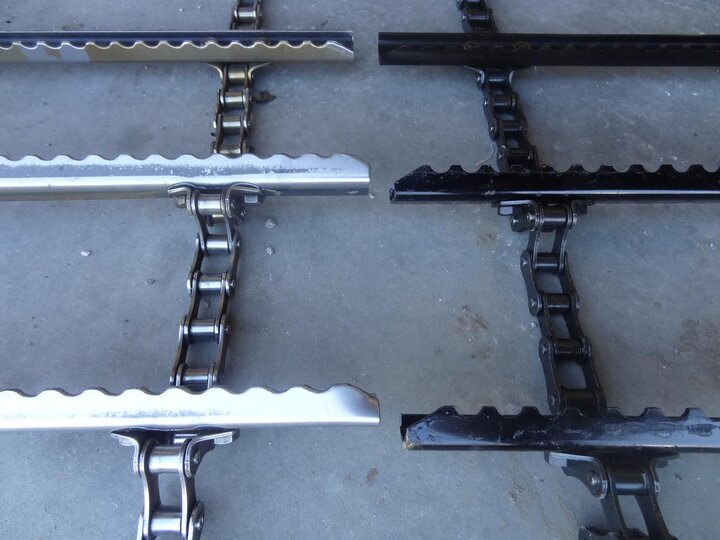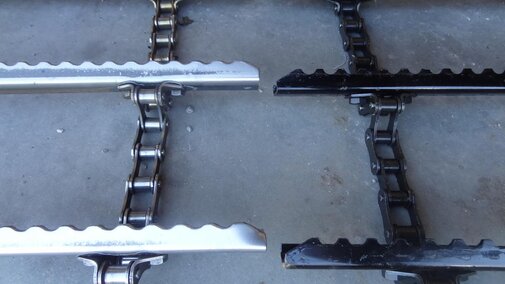Also see the companion article, Plan Harvest to Deliver Soybeans at the Optimum Moisture, in this week's CropWatch.

Everyone knows it is impossible to harvest all your soybeans at exactly 13%, but that should be your goal to optimize potential income. If you're harvesting soybeans at 14%-15% moisture and pods are mature and stems are still green, consider the following equipment recommendations to help assure a good harvest.
- When harvesting tough or green stems, make combine adjustments and operate at slower ground speeds. Make combine adjustments several times a day to match conditions as they change. The following combine adjustments are suggested when harvesting higher moisture soybeans or soybeans with green stems:
- To increase “grip” on the green stems to pull them through the combine, replace rounded or worn parts in the thresher, especially worn feeder house chains (Figure 1) and rasp bars.
- Increase cylinder/rotor speed to make threshing more aggressive to break open green pods and pull the green material through. Do not close down concave clearance as that reduces room for the green materials to pass through the thresher.
- Insert filler plates or wires in the front portion of the concave to keep the green pods in the cylinder/rotor chamber longer for better threshing. If not, the pods will fall through to the sieves unopened. Consider closing down the top sieve slightly to send the green pods out the back if you are not threshing them properly.
- Increase fan speed as the green stems are heavier and need more airflow to keep them suspended above the sieves to allow for proper cleaning and to blow the green leaves out.
- Close down the lower sieve slightly to keep green pods out of the grain tank and send them back to the cylinder/rotor for rethreshing.
- Install disrupter bars on rotary combines to improve green stem flow through the rotor and to reduce “roping." On some rotary combines, you can retard the material flow by adjusting the vanes on the rotor cage or by installing reverser rasp bars to keep the material in the rotor longer to allow more time for threshing and separating.
- Consider adding an air reel to the head to have airflow help feed the soybeans into the combine and reduce bunch feeding. More uniform feeding will improve threshing.
- Reset the combine as outlined above to provide a cleaner harvest.
- Use a grain cleaner to remove the foreign matter before marketing or storage.
- Use a grain spreader when putting beans into storage to better distribute any foreign matter.
- In storage, operate the aeration fan to dry the leaves and green pods to a safe storage moisture content. The pods and green beans will dry quickly and help rehydrate any overly dry beans. The fans need to be operated for temperature management anyway.
Good luck and hopefully you'll have a safe harvest and an excellent crop of 13% moisture soybeans.

